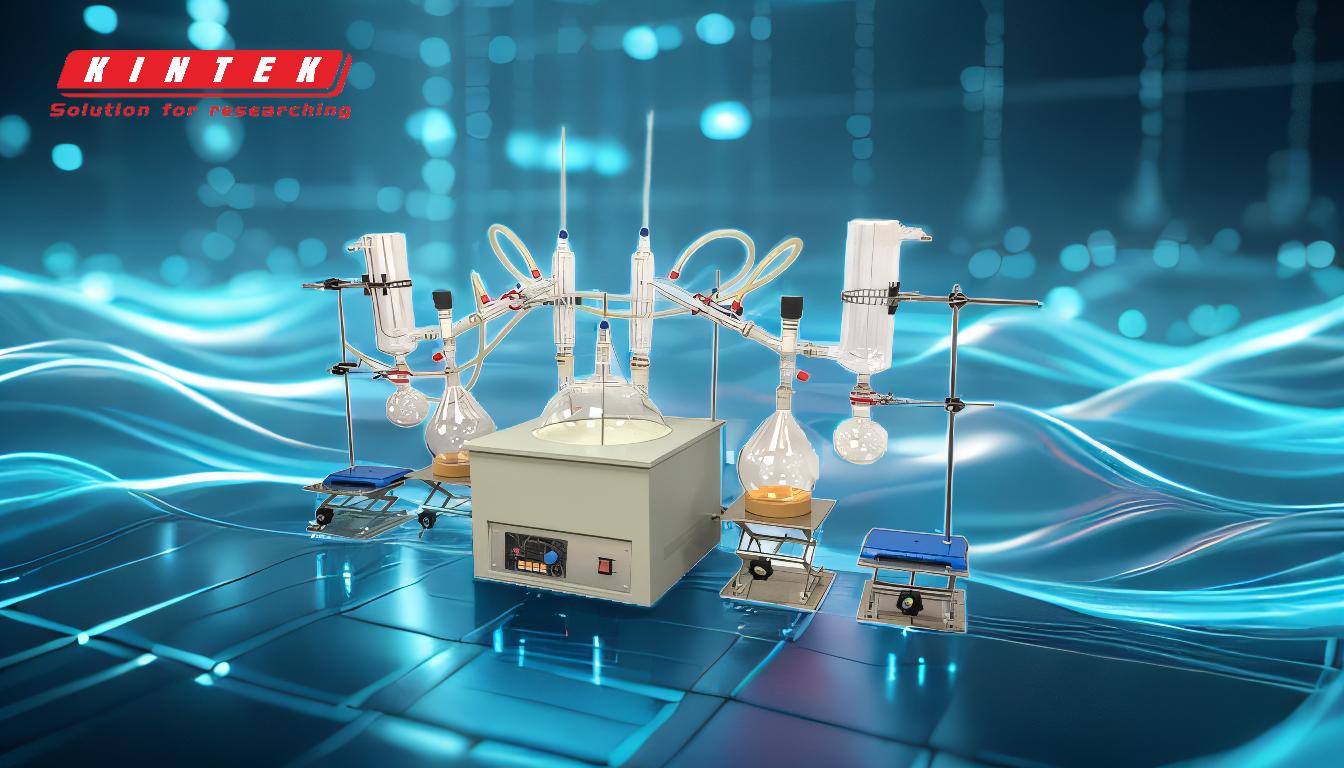Distillation is a widely used process in laboratories and industries for separating mixtures based on differences in boiling points. However, it involves several potential hazards that must be carefully managed to ensure safety. These hazards include high temperatures, vacuum-related risks, chemical exposure, and equipment failure. Proper preparation, such as ensuring secure connections, using appropriate materials, and monitoring cooling systems, is critical to mitigating these risks. Additionally, handling high-temperature fluids and ensuring adequate sealing can prevent burns, leaks, and other accidents. Below, we explore these hazards in detail and provide actionable insights to minimize risks.
Key Points Explained:

-
High-Temperature Hazards
- Distillation involves heating liquids to their boiling points, which can expose operators to high temperatures.
- Hot oil or high-temperature fluids like Syltherm can cause severe burns if they leak or come into contact with skin.
-
Mitigation Measures:
- Use heat-resistant materials (e.g., viton, PTFE, or PFA) for tubing and connections.
- Avoid silicone tubing, as it is unsuitable for high-temperature applications.
- Ensure proper insulation and protective gear when handling heated components.
-
Vacuum-Related Risks
- Distillation often requires creating a vacuum, which can lead to equipment failure or implosion if not properly managed.
- Improper sealing or insufficient vacuum grease can cause leaks, reducing efficiency and increasing risks.
-
Mitigation Measures:
- Draw down the vacuum to the recommended pressure (e.g., 0.03 MPa) before starting the process.
- Apply vacuum grease to all interfaces, sealing surfaces, and joints to ensure airtight connections.
- Regularly inspect seals and joints for wear or damage.
-
Chemical Exposure
- Distillation involves handling potentially hazardous chemicals, which can pose risks of inhalation, skin contact, or ingestion.
- Volatile compounds may release toxic fumes if not properly contained.
-
Mitigation Measures:
- Use fume hoods or proper ventilation to prevent inhalation of harmful vapors.
- Wear appropriate personal protective equipment (PPE), such as gloves, goggles, and lab coats.
- Ensure all containers and connections are securely sealed to prevent leaks.
-
Cooling System Failures
- Cooling systems, such as chillers and cold traps, are essential for condensing vapors during distillation.
- Insufficient cooling water or low levels of ethanol/water in chillers can lead to overheating and equipment damage.
-
Mitigation Measures:
- Verify that cooling water valves are open and functioning correctly before starting the process.
- Check and maintain adequate levels of cooling fluids (e.g., ethanol, water, or liquid nitrogen).
- Monitor cooling system pressure and temperature throughout the distillation process.
-
Equipment Slippage or Misalignment
- The distillation flask and other components may slip or become misaligned during operation, especially under vacuum conditions.
- This can lead to spills, breakage, or injury.
-
Mitigation Measures:
- Secure all glassware and tubing joints before starting the process.
- Use clamps or supports to stabilize the distillation flask and other components.
- Open rotation carefully after establishing the vacuum to prevent sudden movements.
-
Fire and Explosion Risks
- Flammable solvents or high-temperature fluids can ignite if exposed to open flames or sparks.
- Poorly maintained equipment or improper handling of heat sources can increase fire risks.
-
Mitigation Measures:
- Use non-flammable heat transfer fluids where possible.
- Keep flammable materials away from heat sources and open flames.
- Regularly inspect and maintain heating equipment to prevent malfunctions.
-
Inadequate Monitoring and Maintenance
- Failure to monitor the distillation process or maintain equipment can lead to accidents or inefficiencies.
- Overheating, pressure buildup, or leaks can occur if systems are not regularly checked.
-
Mitigation Measures:
- Continuously monitor temperature, pressure, and fluid levels during the distillation process.
- Perform routine maintenance on all equipment, including seals, joints, and cooling systems.
- Train operators on proper procedures and emergency response protocols.
By understanding and addressing these potential hazards, operators can ensure a safer and more efficient distillation process. Proper preparation, use of appropriate materials, and vigilant monitoring are key to minimizing risks and achieving successful outcomes.
Summary Table:
| Hazard | Key Risks | Mitigation Measures |
|---|---|---|
| High-Temperature Hazards | Burns from hot oil or high-temperature fluids | Use heat-resistant materials (e.g., viton, PTFE, PFA), avoid silicone tubing, and wear protective gear. |
| Vacuum-Related Risks | Equipment failure, implosion, or leaks due to improper sealing | Apply vacuum grease, inspect seals, and draw down vacuum to recommended pressure (e.g., 0.03 MPa). |
| Chemical Exposure | Inhalation, skin contact, or ingestion of hazardous chemicals | Use fume hoods, wear PPE (gloves, goggles, lab coats), and ensure secure sealing of containers. |
| Cooling System Failures | Overheating or equipment damage due to insufficient cooling | Verify cooling water valves, maintain fluid levels, and monitor system pressure and temperature. |
| Equipment Slippage | Spills, breakage, or injury from misaligned or unstable components | Secure glassware, use clamps or supports, and open rotation carefully after establishing vacuum. |
| Fire and Explosion Risks | Ignition of flammable solvents or high-temperature fluids | Use non-flammable heat transfer fluids, keep flammables away from heat sources, and inspect equipment. |
| Inadequate Monitoring | Accidents or inefficiencies due to lack of monitoring or maintenance | Continuously monitor temperature, pressure, and fluid levels; perform routine maintenance and training. |
Ensure a safer distillation process—contact our experts today for tailored safety solutions!











